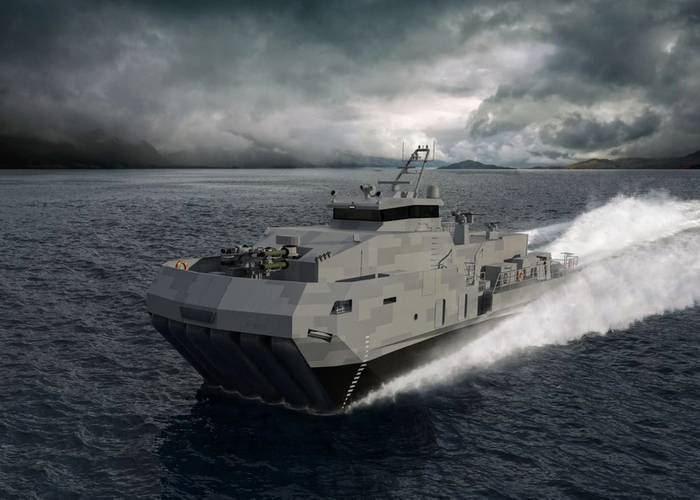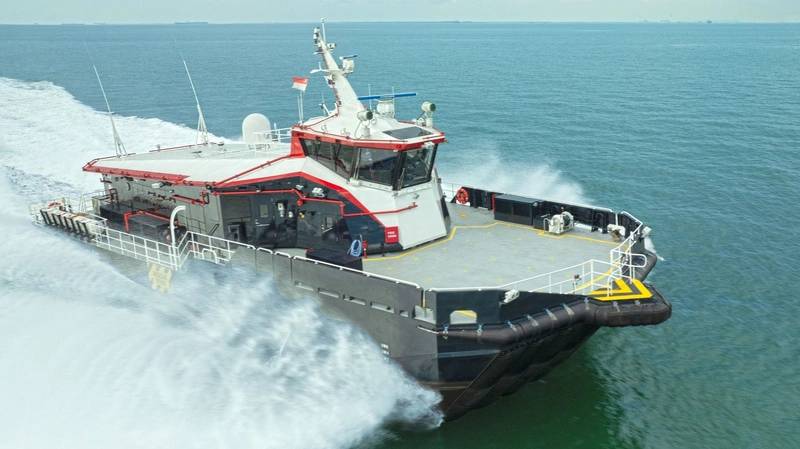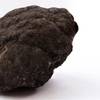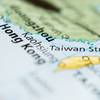EUREKA! High-Speed AIRCAT SES for Military Missions
Eureka Naval Craft is introducing its suite of high-speed AIRCAT (air cushion catamarans) surface effect ships (SES), already in use with the offshore energy industry, to the defense market.
According to Bo Jardine, CEO of Eureka Naval Craft, a newly formed U.S.-based naval defense company, the versatile suite of AIRCAT naval vessels can serve as a patrol craft, rescue craft, medical evacuation vessels, heavily armed small combatants and landing craft.
The AIRCAT SES has both an air cushion, like a hovercraft, and twin hulls like a catamaran.
Eureka’s AIRCAT Bengal variant is a military version of the proven commercial AIRCAT 35 Combi, with the same hull as the AIRCAT 35 Crewliner as designed by their partner ESNA Naval Architects. These commercial vessels are in use supporting the offshore energy business, including oil and gas as well as wind operations.
“Working in the offshore business, I learned about the importance of a fast and stable platform to get our crews and equipment out to the rigs quickly, safely and comfortably,” Jardine said. “We’ve taken the commercial AIRCAT design, turned it gray and brought it into defense.”
The advantages of such a craft for the offshore energy industries are the same advantages the military wants: higher speed to weight ratio; lower fuel consumption; lower emissions; and probably the most important, improved comfort. Comfort for people means better accuracy with weapon systems, less wear and tear on sensors, weapons and other sensitive payloads, and longer endurance for crews.
AIRCAT Bengal is well-deck capable and can be carried inside amphibious ships. They are also equipped with a full galley and can make their own water for extended sorties.
“Our AIRCAT Bengal combatant craft can cruise 38 knots for 1,000 nautical miles with a top speed of 47 to 50 knots, depending upon what we carry onboard, with seven to 21 days endurance,” Jardine said. “They are manned with a crew of between five and seven, mission depending” and “can carry 22 personnel in comfort; and when I say in comfort, they are probably better accommodations than our Sailors and Marines are used to—practically everyone has their own bathroom. We can carry two 20-foot containers on the back deck, and they can be used for cargo, or payloads such as missiles, mines, torpedoes, drones or mine countermeasure (MCM) systems.”
 (Image: Eureka Naval Craft)
(Image: Eureka Naval Craft)
The commercial hull design is the same as the one the company is using for the defense version, and was evaluated extensively in model testing in Norway.
The design out-performed catamarans, trimarans, outrigger style hulls and even other surface effect ships in energy major evaluation and model testing, Jardine said.
“We are a U.S. company,” Jardine said. “The first three AIRCAT commercial vessels are being built in Singapore at Strategic Marine. We are going to license these defense designs out to shipyards globally. Ultimately, we hope to also build them at shipyards in the U.S., Europe and Asia.”
Jardine said the vessels can easily be built at a number of different tier 2 and 3 shipyards in the U.S. and abroad. “We could scale up with a number of yards to build them quickly and in large numbers.”
The vessels are completely non-ITAR, although the combat systems—sensors, weapons, communications and integration—placed on board by defense OEMs may, themselves, have ITAR restrictions. (The International Traffic in Arms Regulations (ITAR) are regulations established by the U.S. Department of State that govern the export of defense and military technologies. Their primary purpose is to protect national security and promote foreign policy goals.)
“We have collaborated with many global defense OEMs on a full range of systems that can be installed and integrated by these OEMs, to include guns, drones, missiles, anti-submarine warfare (ASW) weapons and soft-kill systems,” Jardine said. “AIRCAT Bengals can also be equipped with radar and optronic sensors which can provide remote targeting for other ships and aircraft.”
“We have the margin to bring on new combat capabilities as they are developed,” Jardine said.
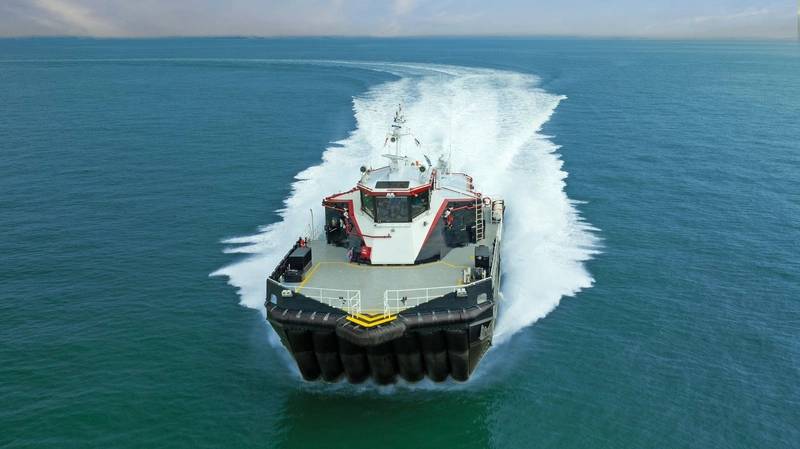 (Image: Eureka Naval Craft)
(Image: Eureka Naval Craft)
SES evolution
Over the years there have been issues with SES vessels, such as problematic lift fans and difficult skirt replacements. Jardine said there has been an evolution with SES vessels. “We now have much more reliable lift fan system, as well as an activated damper system. We can now replace the skirts with the boat in the water. We don't need to go into a dry dock to do this type of work.”
There is a high degree of automation. “These vessels are more or less like fly by wire on water,” he said. “I say that because we essentially have computer controls to run things that used to take four people to do when the SES first came out. It's a smart system where it automatically varies the air bag to the conditions, which increases the reliability and improves the ride characteristics.”
Jardine said the boat runs very smoothly at 47 knots. “It has great performance. And this is a real-world boat; not a concept or a PowerPoint presentation.”
The computerized ride control system uses high-speed actuators to correct changes in pitch and heave. The active dampers reduce vertical acceleration significantly.
“When it goes on cushion, it takes out the motion,” Jardine said. “For weapons and things like that, it makes a big difference, just like it does for people.”
The system is in use now in the offshore wind business for crew transfer vessels (CTV) and very soon will begin service in oil and gas, where customers value reduction in motion for a safer, smoother ride. “In some sea environments you have rough seas, and moving people to and from platforms and rigs encounters a lot of seasickness,” Jardine said. “This vessel has a huge reduction in cases of seasickness.”
When translated to defense, it means a more stable platform for weapons, drones, counter-drone systems and other capabilities.
Jardine said the vessels can be optionally designed to operate without crews in an unmanned remote and/or autonomous mode.
“AIRCAT Bengal can be a terrific counter-drone platform, as well as a MEDEVAC vessel,” Jardine said. “We can sail our vessel up on to the beach in a contested littoral area to pick up wounded personnel, provide care on board and quickly move the injured troops to a higher level of care. We can set up spaces for medical triage and treatment, and the doors and corridors are wide enough to accommodate a stokes litter.”
SES is not a new technology. The U.S. Navy and Norway have a lot of experience with SES vessels, and the U.S. Coast Guard has also used them. “We think this kind of vessel is ideal for the Coast Guard’s high-speed interdiction missions,” Jardine said.
“Our craft are an evolution beyond the Norwegian Navy’s Skjold-class corvettes. However, they have some of the same combat systems on board, including Rheinmetall’s MASS naval self-defense system,” Jardine said.
Eureka’s defense vessels have similar SES hulls as the fully tested commercial hulls in service, and the company’s commercial partner AIRCAT will soon unveil other commercial variants for use in offshore energy, including their AIRCAT 25 CrewLiner and AIRCAT 25 WindFarmer.
Eureka’s vessels rely almost entirely on commercial-off-the-shelf systems which have existing OEM global support networks for parts or servicing. They are also highly customizable and can be outfitted in line with end user needs.
Eureka envisions making its vessel designs available for build in multiple shipyards to maximize production in a contingency, much like Andrew Jackson Higgins did with his landing craft and PT boats, which were built in very large numbers, during World War II. “Those boats were built quickly and efficiently, and they were based on proven commercial technology. We want to bring in the next generation of these types of vessels. We've taken our hulls and turned them into what I would call the modern-day equivalent of Higgin’s PT boats and landing craft. We even have an autonomous variant than can operate with or without a crew.” Jardine said. “Furthermore, our boats draw very little water and are highly maneuverable in shallow littoral waters and can go where rigid-hull inflatable boats (RHIB) operate.”
Eureka’s forming partners include AIRCAT Vessels of Bayonne, France; ESNA Naval Architects, Kristiansand, Norway; 1852 Solutions Ltd, Houston, Texas; and Trident Offshore Projects, Houston, Texas.
 The Aircat WindFarmer is proven design that can be readily adapted my military purposes. (Image: Eureka Naval Craft)
The Aircat WindFarmer is proven design that can be readily adapted my military purposes. (Image: Eureka Naval Craft)
Naval Surface Effect Ships are Not New
The U.S. Navy began its work on surface effect ships in 1960, commissioning the first SES test vessel, the XR-1 in 1963, followed by the XR-3 in 1967, and the XR-5 in 1973.
The U.S. Navy later operated the Bell SES 100A and SES 100B during the 1970s and ’80s, the latter of which was capable of 91.9 knots and which also successfully launched and hit a surface target 6 miles away with a missile, all while traveling at 60 knots.
U.S. Navy SES 200 was acquired in 1984 for testing, and later transferred to the Coast Guard for evaluation.
After successful evaluation, the U.S. Coast Guard ordered three Bell Halter 110 SES cutters (WSES 2-4) comprised the Key West-based Coast Guard Surface Effect Ship Division, which was established in 1982 and operated until 1994. Between 1986 and 1994 these SES cutters accumulated more patrol hours per hull than any of the other class of cutter then in service with the U.S. Coast Guard.
Two 1,000-ton Navy Bora Class guided-missile corvettes were delivered to the Soviet Navy between 1989-2000. One still operates with Russia’s Black Sea Fleet. Nine ships of the Royal Norwegian Navy Oksay/Alta Class of mine-countermeasures ships were built in the mid-1990s. Four of these vessels are still in service.
The Norwegian Navy Skjold Class corvettes are capable of achieving speeds up to 60 knots. The first of six in the class was commissioning in 1999. These vessels are all still in service and have undergone life extensions/upgrades from 2022 to present.
Seven 200-ton Nongo Class fast guided-missile boats have been built by North Korea, first appearing in 2015, these SES vessels form the core of the modernized North Korean Navy. All are in active service.
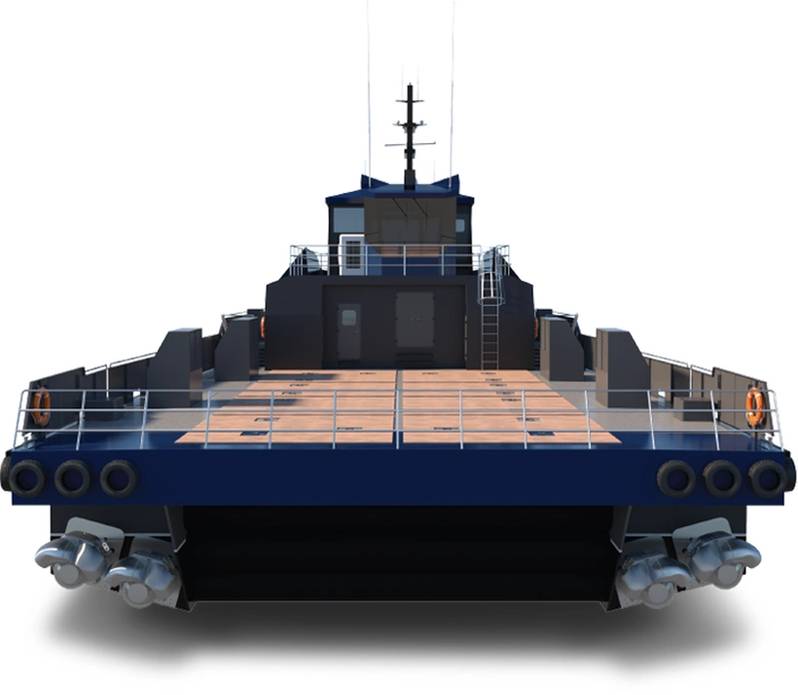 The AIRCAT vessels feature deck space for containers, mission modules or cargo. (Image: Eureka Naval Craft)
The AIRCAT vessels feature deck space for containers, mission modules or cargo. (Image: Eureka Naval Craft)







